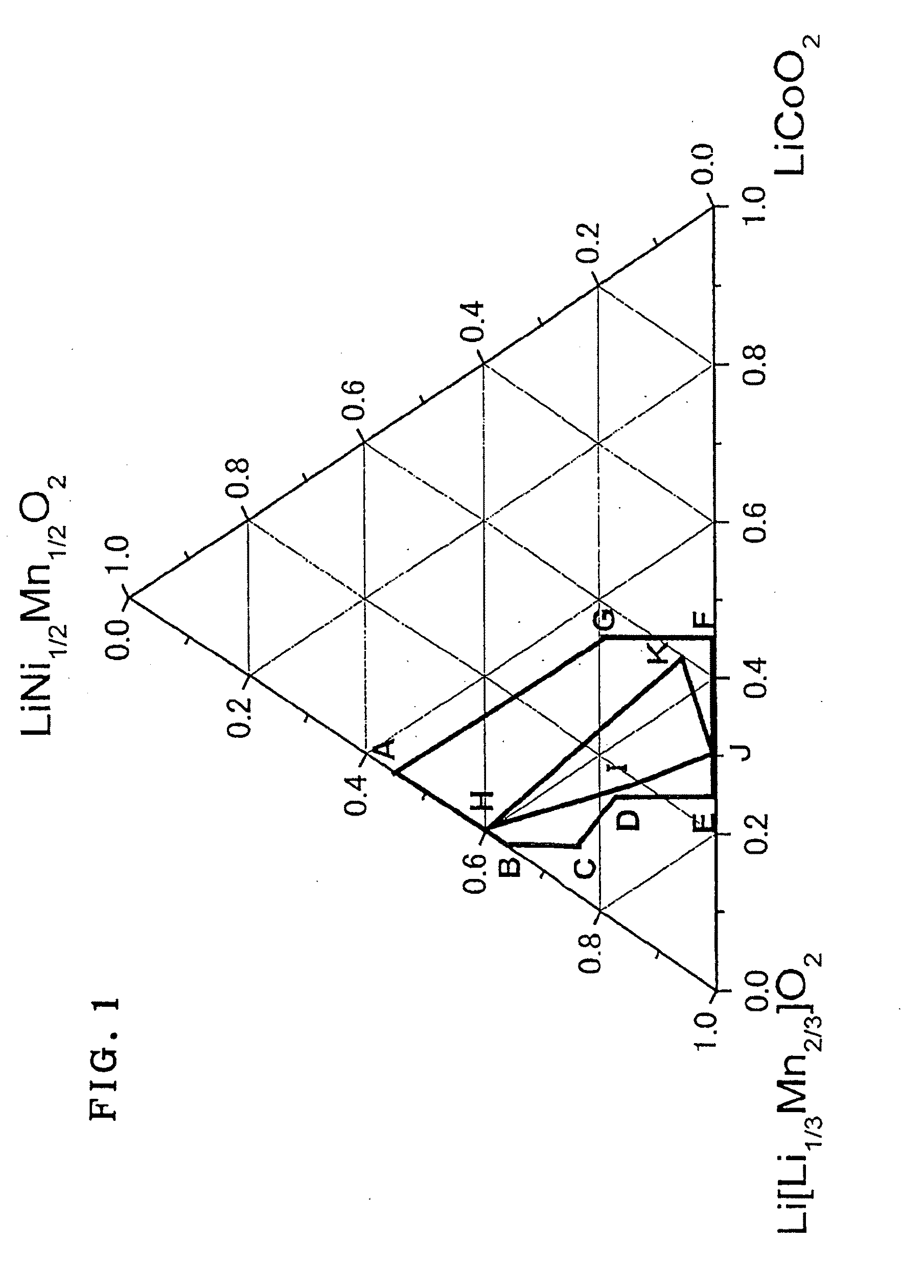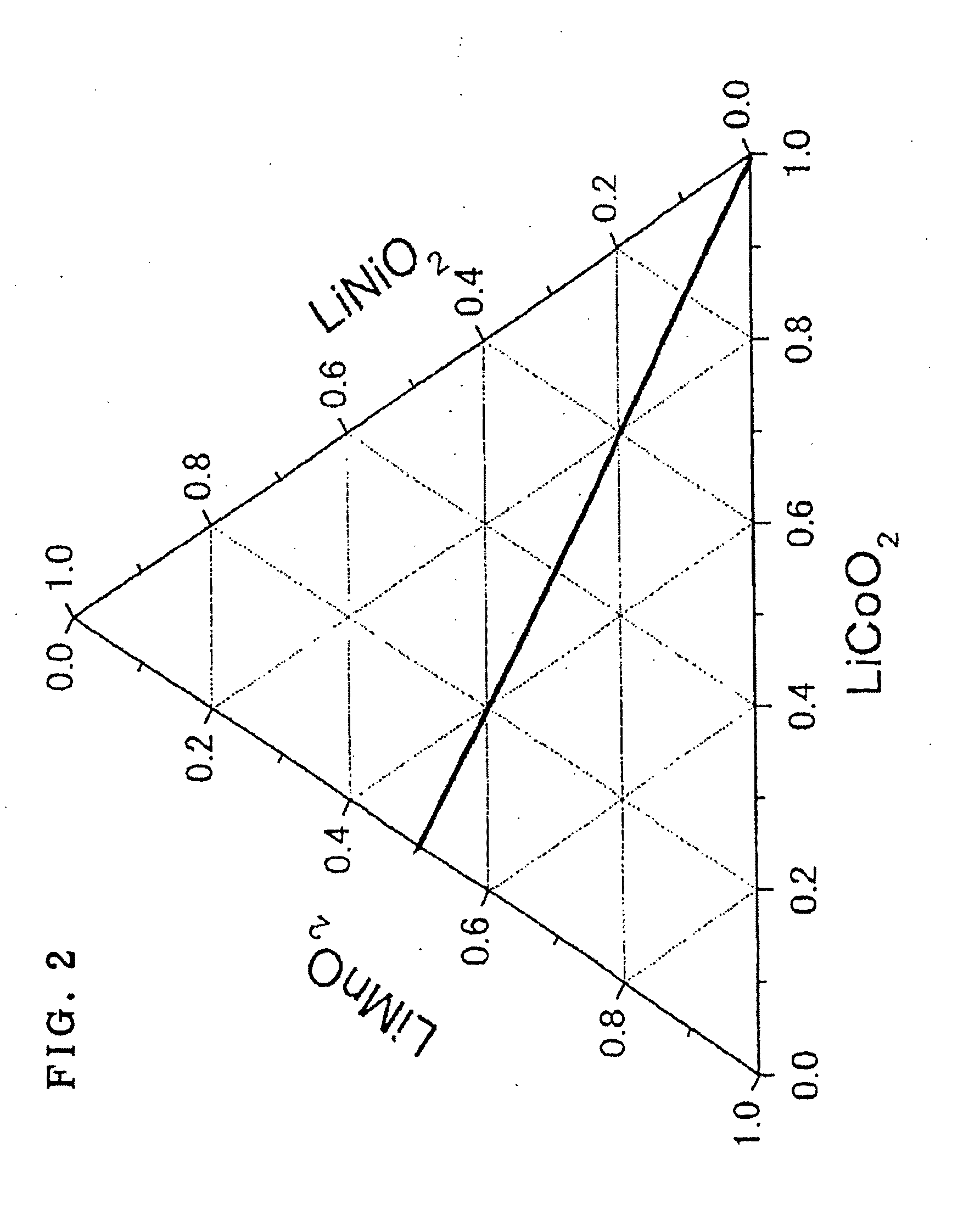Process for producing lithium secondary battery
a lithium secondary battery and active material technology, applied in the direction of nickel compounds, sustainable manufacturing/processing, cell components, etc., can solve the problems of lithium secondary batteries, high polarization, and inferior thermal stability of lithium secondary batteries inside in charging state, and achieve high discharge capacity, reduce battery performance, and exceed the capacity of a conventional positive active material
- Summary
- Abstract
- Description
- Claims
- Application Information
AI Technical Summary
Benefits of technology
Problems solved by technology
Method used
Image
Examples
example 1
[0169]An aqueous mixed solution was produced by dissolving manganese sulfate pentahydrate, nickel sulfate hexahydrate, and cobalt sulfate heptahydrate at a ratio of 0.25:0.17:0.45 of the respective elements Co, Ni, and Mn in ion-exchanged water. At that time, the total concentration was adjusted to 0.667 M and the volume to 180 ml. Next, 600 ml of ion exchanged water was made available in a 1 L beaker and using a hot bath to keep the temperature at 50° C., 8N NaOH was dropwise added to adjust the pH 11.5. In such a state, bubbling with Ar gas was carried out for 30 min to sufficiently remove dissolved oxygen in the solution. The content in the beaker was stirred at 700 rpm, the prepared sulfates-mixed aqueous solution was added dropwise at a speed of 3 ml / min. During the time, the temperature was kept constant by the hot bath and pH was kept constant by intermittently adding 8 N NaOH dropwise. Simultaneously, 50 ml of an aqueous 2.0 M hydrazine solution as a reducing agent was added...
examples 2 to 44
[0177]The active materials of the present invention were synthesize in the same manner as Example 1, except that the compositions of the transition metal elements contained in the coprecipitated hydroxide precursors and the amount of lithium hydroxide to be mixed was changed according to the composition formulas shown in Examples 2 to 44 shown in Table 1.
[0178]As a result of X-ray diffractometry, similarly to Example 1, the α-NaFeO2 type hexagonal structure was confirmed to be a main phase and also a diffraction peak around 20 to 300 which is obtained partially for monoclinic Li[Li1 / 3Mn2 / 3]O2 was observed. Further, as shown in Table 1, the intensity ratio I(003) / I(104) between the diffraction peaks on (003) plane and (104) plane before charge-discharge was all 1.56 or higher.
PUM
| Property | Measurement | Unit |
|---|---|---|
| positive electrode potential | aaaaa | aaaaa |
| crystal structure | aaaaa | aaaaa |
| ternary phase diagram | aaaaa | aaaaa |
Abstract
Description
Claims
Application Information
 Login to View More
Login to View More - R&D
- Intellectual Property
- Life Sciences
- Materials
- Tech Scout
- Unparalleled Data Quality
- Higher Quality Content
- 60% Fewer Hallucinations
Browse by: Latest US Patents, China's latest patents, Technical Efficacy Thesaurus, Application Domain, Technology Topic, Popular Technical Reports.
© 2025 PatSnap. All rights reserved.Legal|Privacy policy|Modern Slavery Act Transparency Statement|Sitemap|About US| Contact US: help@patsnap.com



